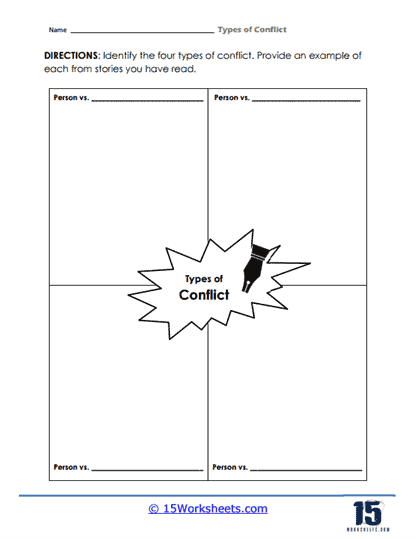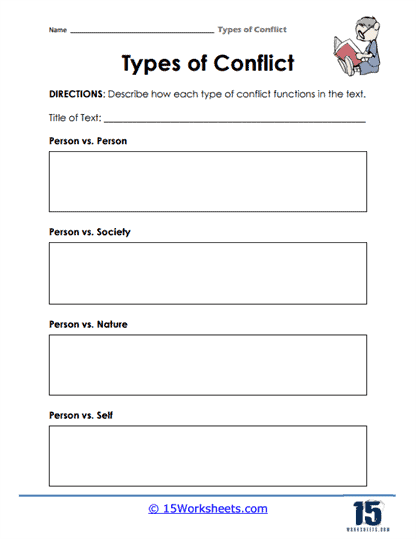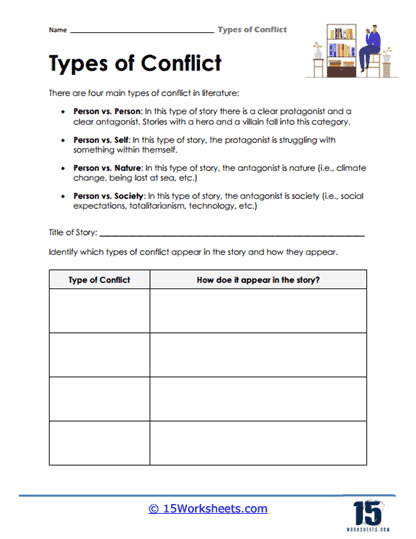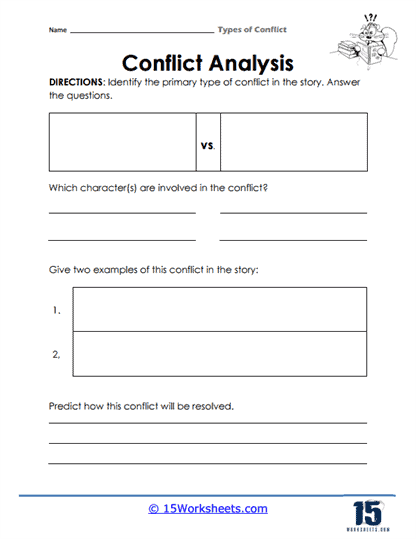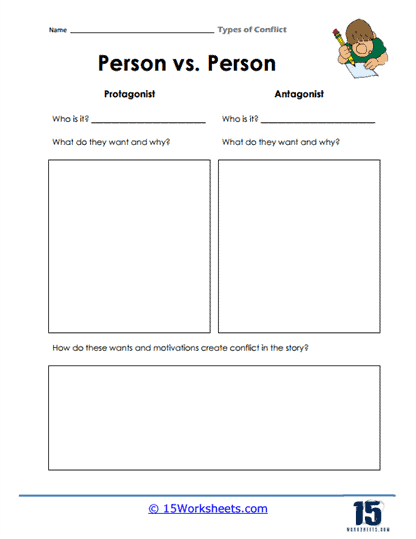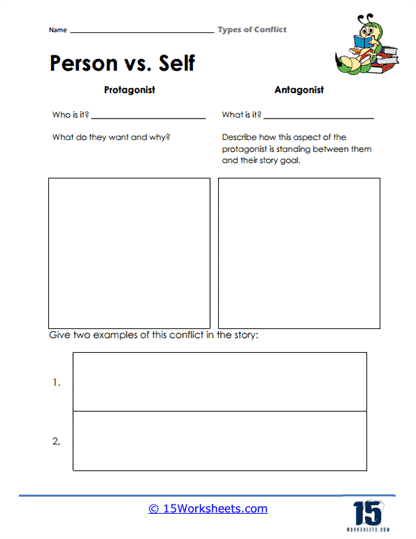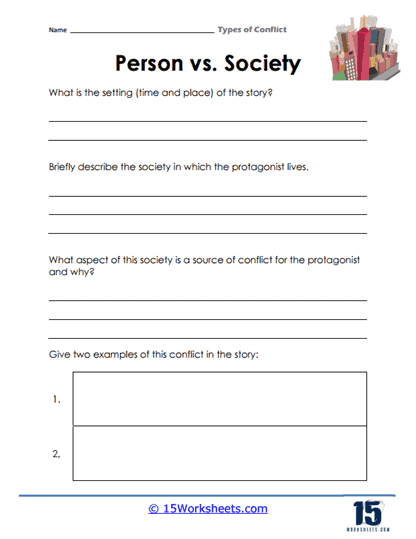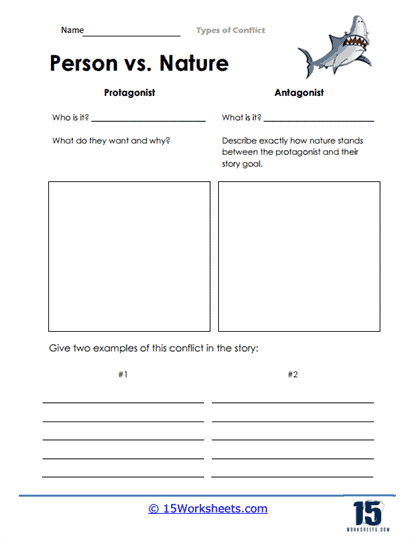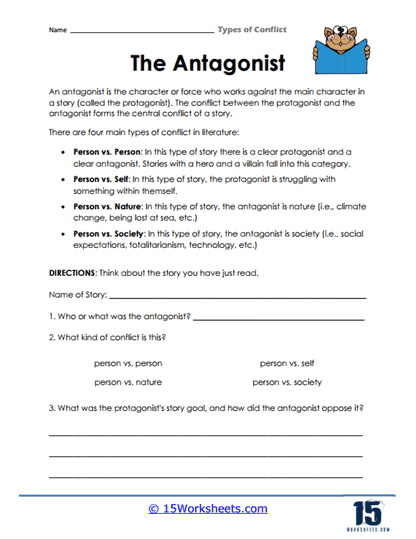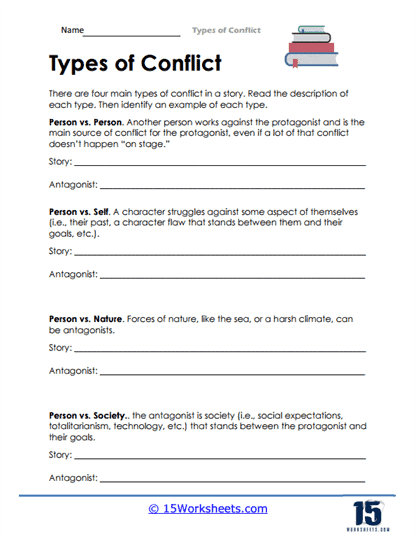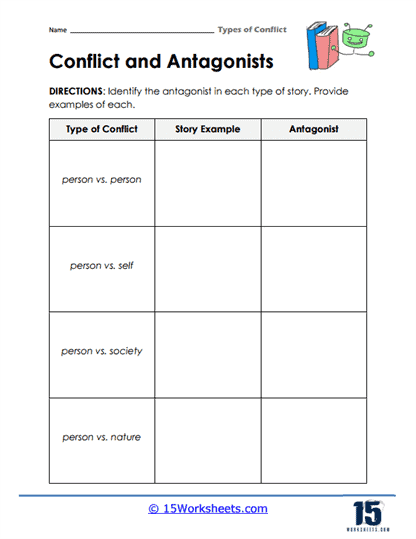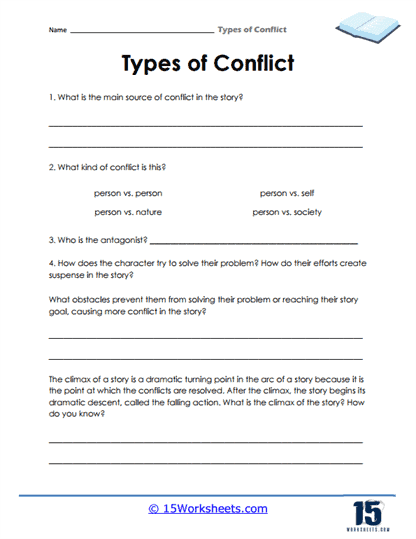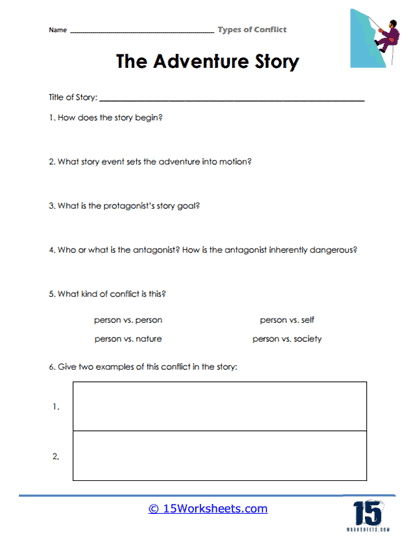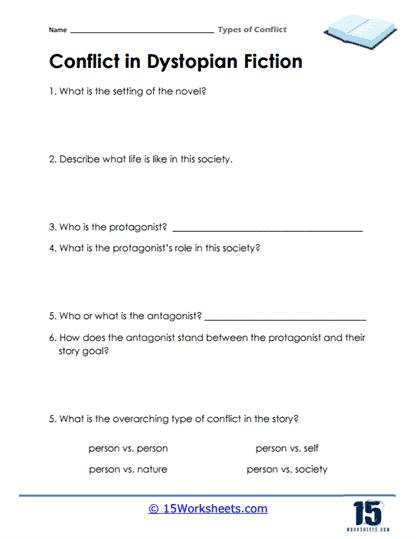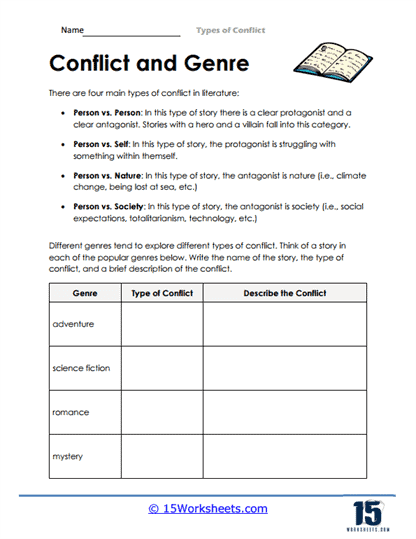Types of Conflict Worksheets
All About These 15 Worksheets
This series of 15 worksheets on Types of Conflict is designed to help students understand and analyze the various types of conflicts that can arise in literature and real-life situations. Conflict is a fundamental element of storytelling, driving plot development and character growth. These worksheets cover a range of topics related to conflict, including identifying and analyzing different types of conflicts, exploring conflict resolution strategies, and examining conflict within specific contexts. By engaging with these worksheets, students can enhance their critical thinking skills, deepen their comprehension of literature, and develop insights into the complexities of human interactions. Through these worksheets, students will:
- Identify and analyze conflicts within different scenarios or across all genres of narratives;
- Grasp all four types of conflict in literature;
- Identify the type of conflict, describe the key characters involved, analyze the root causes and consequences of the conflict, and reflect on potential resolutions;
- And analyze the motivations, actions, and impact of the antagonist on the protagonist and the overall conflict.
This series of worksheets on Types of Conflict offers students the opportunity to explore and analyze different forms of conflict in literature and real-life scenarios. By engaging with these worksheets, they can enhance their critical thinking abilities, deepen their understanding of character motivations and interactions, and develop insights into the complexities of conflict and its resolutions.
Understanding various types of conflict is crucial for interpreting literature and navigating interpersonal dynamics. In summary, these worksheets empower students to engage actively with conflicts, fostering their analytical skills and enabling them to apply their knowledge to a wide range of literary and real-world contexts.
What Are the Different Types of Conflict In Literature?
In literature, conflict is a crucial element that drives the plot and shapes the characters’ actions, emotions, and development. There are several types of conflict that can arise within a story:
Man vs. Man (Character vs. Character)
This is the most common type of conflict, involving a struggle between two characters. The protagonist and antagonist often have opposing goals, beliefs, or values, leading to a clash between them. Examples of man vs. man conflict can be found in many classic works, such as Shakespeare’s “Romeo and Juliet” or Harper Lee’s “To Kill a Mockingbird.”
Man vs. Self (Character vs. Self)
This type of conflict occurs when a character faces an internal struggle, such as moral dilemmas, self-doubt, or personal challenges. The character’s growth and development often hinge on overcoming these internal obstacles. Examples of man vs. self conflict can be seen in F. Scott Fitzgerald’s “The Great Gatsby” or J.D. Salinger’s “The Catcher in the Rye.”
Man vs. Society (Character vs. Society)
In this conflict, a character is pitted against societal norms, traditions, or institutions. The character may challenge unjust laws, defy social conventions, or fight against oppressive systems. Examples of man vs. society conflict can be found in George Orwell’s “1984” or Margaret Atwood’s “The Handmaid’s Tale.”
Man vs. Nature (Character vs. Nature)
This conflict involves a character’s struggle against natural forces, such as extreme weather, disasters, or wildlife. The character’s survival and resilience are often tested in these situations. Examples of man vs. nature conflict can be seen in Jack London’s “The Call of the Wild” or Yann Martel’s “Life of Pi.”
Man vs. Technology (Character vs. Technology)
This type of conflict arises when a character faces challenges or dangers posed by technology, often involving a struggle against machines, artificial intelligence, or advanced scientific concepts. Examples of man vs. technology conflict can be found in Ray Bradbury’s “Fahrenheit 451” or Mary Shelley’s “Frankenstein.”
Man vs. Supernatural (Character vs. Supernatural)
In this conflict, a character confronts supernatural forces, such as ghosts, monsters, or otherworldly beings. This type of conflict is common in horror, fantasy, and paranormal genres. Examples include Bram Stoker’s “Dracula” or Stephen King’s “The Shining.”
Man vs. Fate (Character vs. Fate)
This conflict involves a character’s struggle against their destiny, predetermined events, or the intervention of a higher power. The character’s actions may be guided or hindered by fate, leading to dramatic tension. Examples of man vs. fate conflict can be found in Sophocles’ “Oedipus Rex” or Thomas Hardy’s “Tess of the d’Urbervilles.”
Understanding these different types of conflict can provide valuable insights into the structure and themes of a literary work, as well as the motivations and development of its characters.

